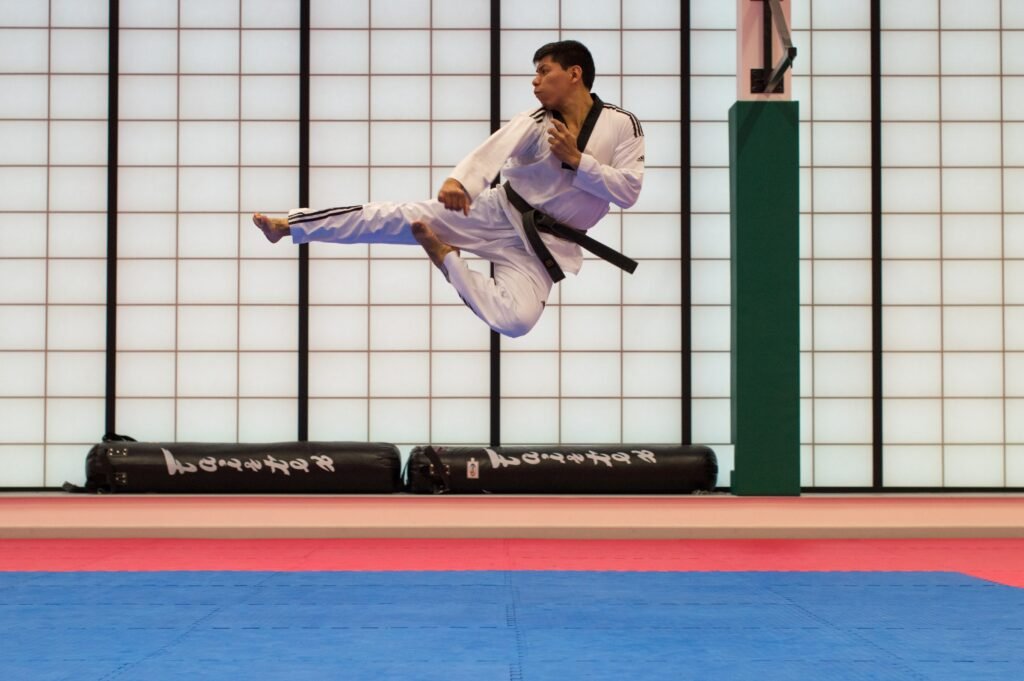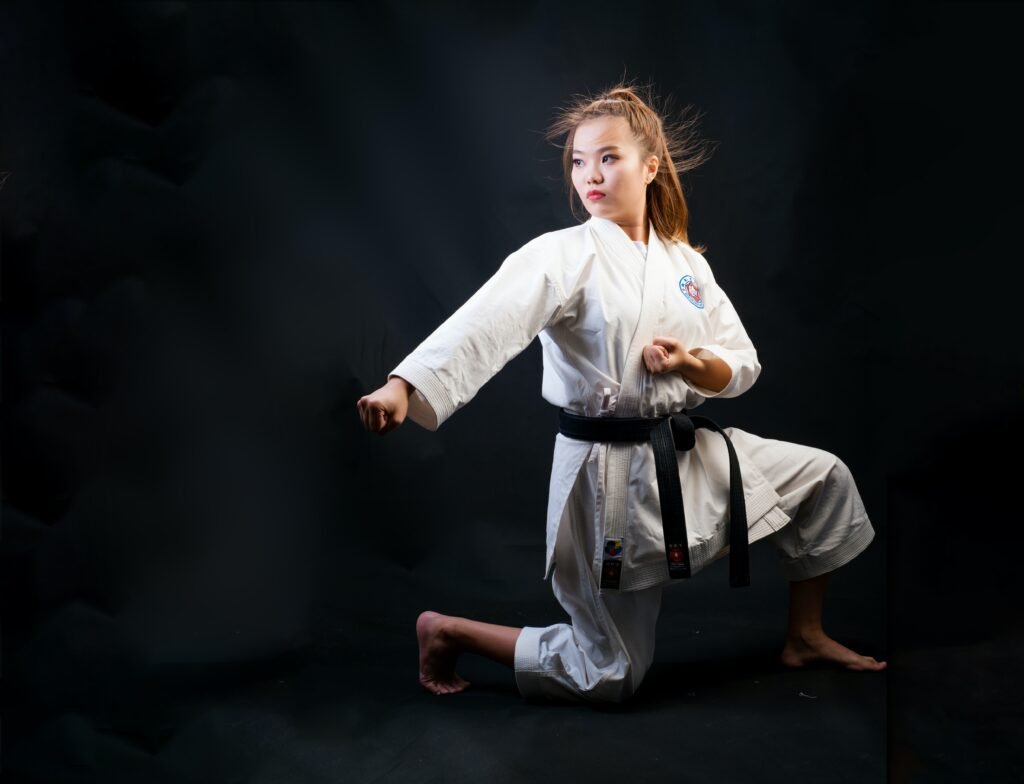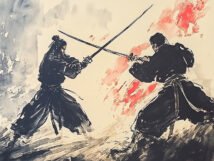Whether you're a beginner or an experienced martial artist, knowing how to tie your martial arts belt is an essential skill. Not only does it hold your uniform in place, but it also symbolizes your progress and dedication to the practice. In this article, we will guide you through the steps of tying your martial arts belt, ensuring that you have a secure and neat knot every time. So, let's get started and master the art of tying your martial arts belt with confidence and precision.
Choosing the Right Belt
When it comes to martial arts, choosing the right belt is essential. Not only does it serve as a symbol of your rank and progression, but it also plays a practical role in holding your uniform together. There are a few key factors to consider when selecting a belt, such as the material, length, and color.
Consider the Material
Martial arts belts are typically made from either cotton or satin. Cotton belts are more common and widely used due to their durability and affordability. Satin belts, on the other hand, have a sleek and shiny appearance, making them a popular choice for demonstration purposes or special events. Consider your personal preferences and the specific requirements of your martial arts discipline when deciding between the two options.
Choose the Correct Length
The length of your belt is another crucial aspect to consider. The standard length for a martial arts belt is usually determined by the size of your uniform. It's important to choose a belt that is long enough to tie securely around your waist but not too long that it hangs down too far and becomes a distraction. Generally, a belt that extends past your hip bone but doesn't reach your knee is the ideal length.
Pick the Right Color
Different martial arts disciplines utilize different belt colors to represent various ranks and levels of experience. While the color system may vary depending on the specific style you practice, there are a few common color patterns. White belts are typically used for beginners, while black belts represent mastery. Many disciplines incorporate a range of colors in between, such as yellow, orange, green, blue, and brown, to signify progression. Research the color system associated with your martial arts discipline to ensure you select the appropriate belt color for your current rank.
Understanding the Anatomy of a Martial Arts Belt
Before delving into the various methods of tying a martial arts belt, it's important to familiarize yourself with the different parts and features of the belt.
Main Parts of a Belt
A martial arts belt consists of three main parts: the body, the ends, and the label. The body is the long, fabric portion that wraps around your waist, holding your uniform in place. The ends refer to the two loose strands of the belt that you will tie together to secure it. The label is a small rectangular piece of fabric attached to one end of the belt, typically featuring the logo or name of the martial arts academy or organization.
Features of a Martial Arts Belt
While martial arts belts may appear simple at first glance, they often have distinct features that enhance their functionality. Many belts have a contrasting stripe running along their length, which can be used to differentiate levels within a rank. Some belts also have a middle seam that guides the practitioner in aligning the belt evenly around the waist. Additionally, some belts come with an embroidered or woven label, showcasing the name or emblem of the martial arts style. Familiarize yourself with these features to better understand the belt you will be tying.

Methods for Tying a Martial Arts Belt
Now that you have chosen the right belt for your needs and understand its anatomy, it's time to learn how to tie it properly. There are several methods for tying a martial arts belt, each with its own unique style and level of complexity. Let's explore four popular methods: the basic knot method, the alternate knot method, the single wrap belt method, and the double wrap belt method.
Basic Knot Method
The basic knot method is the most commonly used and simplest technique for tying a martial arts belt. To use this method:
- Hold the belt horizontally in front of you, ensuring that both ends are of equal length.
- Find the middle of the belt by folding it in half. The folded part should be directly in front of you.
- Place the middle of the belt against your waist, with the fold touching your belly button.
- Cross the ends behind your back and bring them around to the front, crossing them over the top of the folded part of the belt.
- Pull the ends underneath the folded part and bring them up through the loops created by the cross.
- Pull the ends gently to tighten the knot, ensuring it is secure but still comfortable.
Alternate Knot Method
The alternate knot method offers a slightly different appearance and can be a fun variation to try. Here's how to tie your belt using this method:
- Hold the belt horizontally in front of you, ensuring that both ends are of equal length.
- Cross the ends behind your back and bring them around to the front, crossing them over each other just below your waist.
- Take one end and bring it over and through the opening created by the other end crossing over.
- Tighten the knot by pulling both ends simultaneously, making sure it is snug but not too tight.
Single Wrap Belt Method
The single wrap belt method is a popular choice for practitioners who prefer a neat and tidy appearance. To tie your belt using this method:
- Hold the belt horizontally in front of you, ensuring that both ends are of equal length.
- Wrap the belt around your waist, making sure it is centered and neither end is longer than the other.
- Cross the ends behind your back and bring them around to the front, crossing them over each other just below your waist.
- Pull the ends through the loops created by the cross, making sure the ends are of equal length.
- Tighten the knot by pulling both ends simultaneously, adjusting the tension until it feels secure.
Double Wrap Belt Method
The double wrap belt method is similar to the single wrap method but involves wrapping the belt around your waist twice instead of just once. Follow these steps to tie your belt using this method:
- Hold the belt horizontally in front of you, ensuring that both ends are of equal length.
- Wrap the belt around your waist, crossing the ends at the back and bringing them around to the front.
- Repeat the wrapping process, bringing the ends around your waist again and crossing them over each other just below your waist.
- Pull the ends through the loops created by the cross, making sure the ends are of equal length.
- Tighten the knot by pulling both ends simultaneously, adjusting the tension until it feels secure.
Step-by-step Instructions: Basic Knot Method
For those who prefer a more detailed set of instructions, here is a step-by-step guide on tying your martial arts belt using the basic knot method:
Step 1: Hold the Belt
Start by holding the belt horizontally in front of you, ensuring that both ends are of equal length.
Step 2: Find the Middle
Fold the belt in half to find the middle. The folded part should be directly in front of you.
Step 3: Place the Middle on Your Waist
Place the middle of the belt against your waist, ensuring the fold touches your belly button.
Step 4: Cross the Ends
Cross the ends behind your back and bring them around to the front, crossing them over the top of the folded part of the belt.
Step 5: Pull the Ends Through
Pull the ends underneath the folded part of the belt and bring them up through the loops created by the cross.
Step 6: Tighten the Knot
Pull the ends gently to tighten the knot, ensuring it is secure but still comfortable. Adjust the tightness as needed.

Step-by-step Instructions: Alternate Knot Method
If you prefer the alternate knot method, follow these step-by-step instructions to tie your martial arts belt:
Step 1: Hold the Belt
Hold the belt horizontally in front of you, ensuring both ends are of equal length.
Step 2: Cross the Ends
Cross the ends behind your back and bring them around to the front, crossing them over each other just below your waist.
Step 3: Bring One End Over and Through
Take one end and bring it over and through the opening created by the other end crossing over.
Step 4: Tighten the Knot
Tighten the knot by pulling both ends simultaneously, making sure it is snug but not too tight. Adjust the knot as needed for comfort.
Step-by-step Instructions: Single Wrap Belt Method
To tie your belt using the single wrap method, follow these step-by-step instructions:
Step 1: Hold the Belt
Hold the belt horizontally in front of you, ensuring both ends are of equal length.
Step 2: Wrap the Belt Around Your Waist
Wrap the belt around your waist, making sure it is centered and neither end is longer than the other.
Step 3: Cross the Ends
Cross the ends behind your back and bring them around to the front, crossing them over each other just below your waist.
Step 4: Pull the Ends Through
Pull the ends through the loops created by the cross, making sure the ends are of equal length.
Step 5: Tighten the Knot
Tighten the knot by pulling both ends simultaneously, adjusting the tension until it feels secure. Ensure the knot is comfortable and not too restrictive.

Step-by-step Instructions: Double Wrap Belt Method
If you prefer the double wrap method, here are step-by-step instructions to tie your belt using this technique:
Step 1: Hold the Belt
Hold the belt horizontally in front of you, ensuring both ends are of equal length.
Step 2: Wrap the Belt Around Your Waist Twice
Wrap the belt around your waist, crossing the ends at the back and bringing them around to the front.
Step 3: Cross the Ends
Repeat the wrapping process, bringing the ends around your waist again and crossing them over each other just below your waist.
Step 4: Pull the Ends Through
Pull the ends through the loops created by the cross, making sure the ends are of equal length.
Step 5: Tighten the Knot
Tighten the knot by pulling both ends simultaneously, adjusting the tension until it feels secure. Ensure the knot is comfortable and provides sufficient support.
Tips and Tricks for Tying a Martial Arts Belt
Tying a martial arts belt is a skill that improves with practice. Here are some helpful tips and tricks to ensure you tie your belt effectively and efficiently:
Practice Regularly
Take the time to practice tying your belt regularly, both before and after each training session. Repetition will help you become more confident and proficient in your technique.
Ensure Proper Tightness
When tying your belt, aim for a snug yet comfortable fit. Avoid tying it too tightly, as this can restrict your movement and limit your mobility during training.
Consider the Uniform Design
Some martial arts styles have specific requirements for how the belt should be tied or positioned on the uniform. Familiarize yourself with any guidelines or recommendations provided by your instructor and ensure you adhere to them.
Maintaining Your Tied Martial Arts Belt
Once you have mastered the art of tying your martial arts belt, it's important to properly maintain it to preserve its quality and longevity.
Avoid Excessive Wrapping
When tying your belt, be mindful not to wrap it excessively or overly tightly as this can deteriorate the fabric and cause unnecessary wear and tear.
Wash the Belt Properly
Over time, your martial arts belt may become dirty or develop an odor from sweat or regular use. To clean your belt, hand wash it using mild soap and cool water. Avoid bleaching or using harsh chemicals that may damage the fabric. Allow the belt to air dry naturally to avoid shrinkage.
Conclusion
Choosing and tying the right martial arts belt is an essential part of your training journey. By considering the material, length, and color, you can select a belt that suits your needs and reflects your progression within your martial arts discipline. Understanding the anatomy of a belt and mastering various tying methods will ensure your belt is secure and properly positioned. Remember to practice regularly, maintain proper tightness, and follow any uniform guidelines provided by your instructor. With these tips and tricks, you will confidently tie your martial arts belt and proudly showcase your dedication and skill in your chosen discipline.














